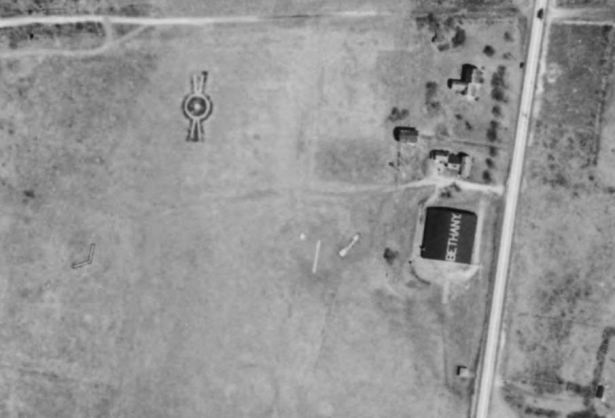In 1920, a small airplane landed in a flat, open field one mile north of Bethany Center in Connecticut. It was a field conveniently located near the center of the state with enough clearance to allow a small airplane to take off and land in relative safety. Two years later, Harris Whittemore Jr. of Naugatuck, recognizing the commercial potential of the area, purchased the land and began building an airfield. What pilots first called Bethany Field, later became Bethany Airport, one of the earliest private airports in New England.
In its first few years, the airfield in Bethany served the interests of small-time aviation enthusiasts. Its central location, however, soon made it a convenient stop for planes providing airmail service between New York and Boston. In 1930, it provided for the departure of the K of New Haven in its crew’s attempt to complete the first nonstop refueling flight between North and South America. The plan called for the plane to take off from Bethany and fly 7,700 miles to Buenos Aires, Argentina, taking on additional fuel in the air at various points along the route. Unfortunately, the K of New Haven ran low on fuel while caught in heavy fog over Georgia and the three crew members had to abandon the plane in order to parachute to safety.
The K of New Haven was not the only flight out of Bethany to meet with misfortune, however, as early attempts at aviation regularly ended in disaster. In 1932, a plane piloted by Irving H. Merriman of Waterbury crashed near the airport—luckily the pilot escaped with little more than “a shaking.” Elliot McCune was not as lucky when an experimental, all-metal monoplane he flew that same year lost a wing and crashed shortly after takeoff.
In addition to air disasters, the hazards at Bethany Airport extended to the ground. On January 25, 1942, a fire that started in a small office and storage room destroyed six airplanes and a hangar. The exposed gas tanks and fabric-covered airplane wings helped the fire spread rapidly, resulting in $19,000 in damages.
From Airfield to Playing Field
Months later, however, with rebuilt facilities, the Civil Aeronautics Authority approved the resumption of operations in Bethany. Owner Walter Reynolds, who purchased the airport from Harris Whittemore Jr., installed individual T-shaped hangars for each of the airplanes housed there, reducing the potential for large-scale disasters. Shortly after, the airport began serving as a base for the Civil Air Patrol (in order to protect the skies over New England from enemy attack during World War II).
By the 1960s, encroaching land development projects, increased government regulation, and skyrocketing costs placed tremendous pressure on the airport’s operations. In 1965, the airport officially closed, in part to allow for the construction of a nearby television broadcast tower. Two years later the town purchased the land for use as an industrial park but, instead, local residents found the former-airport’s grounds to be a great place for recreation. Providing open space for hosting horse shows, playing soccer, or driving golf balls, the airport grounds continue to serve as a favorite spot for residents to join in outdoor activities.








